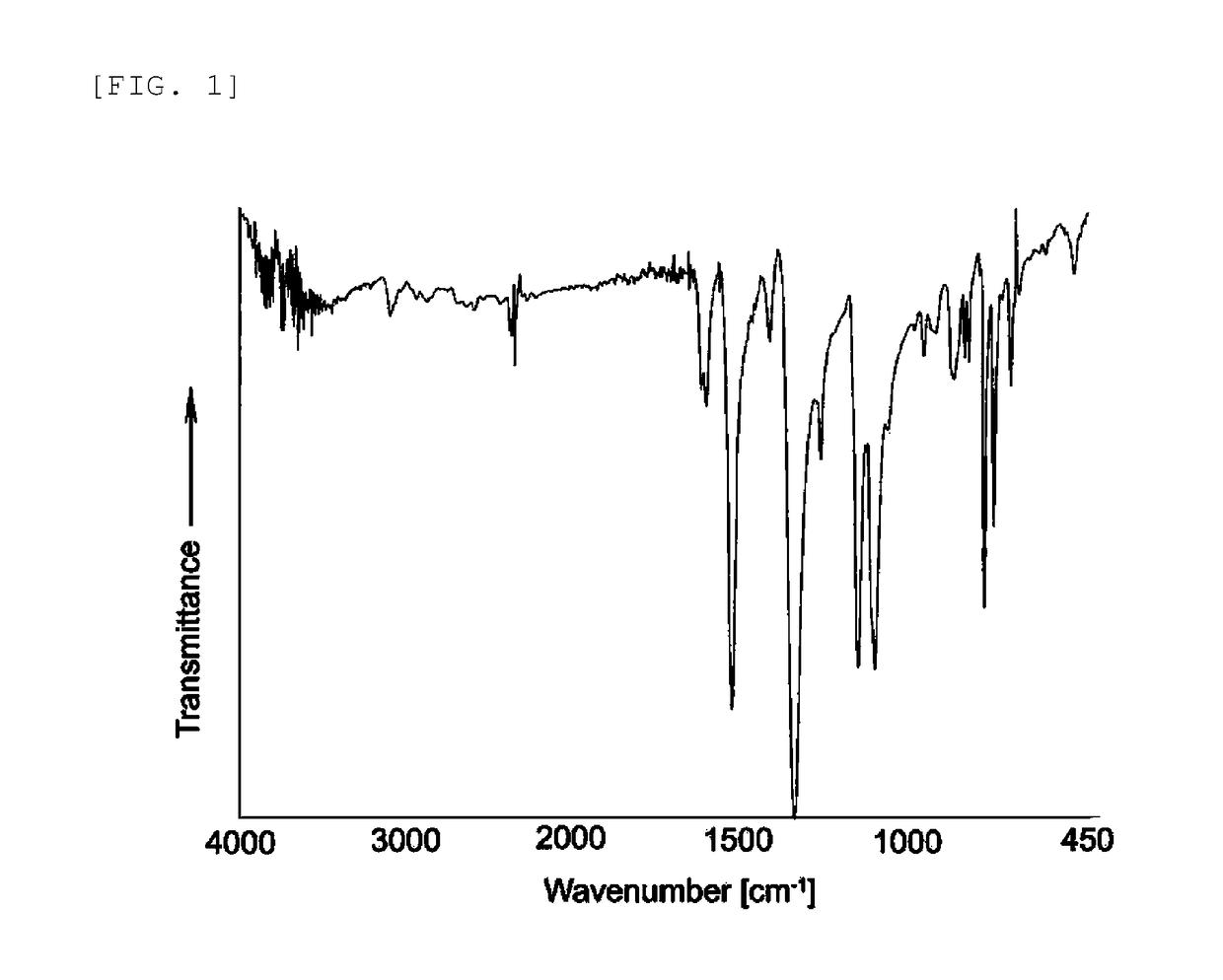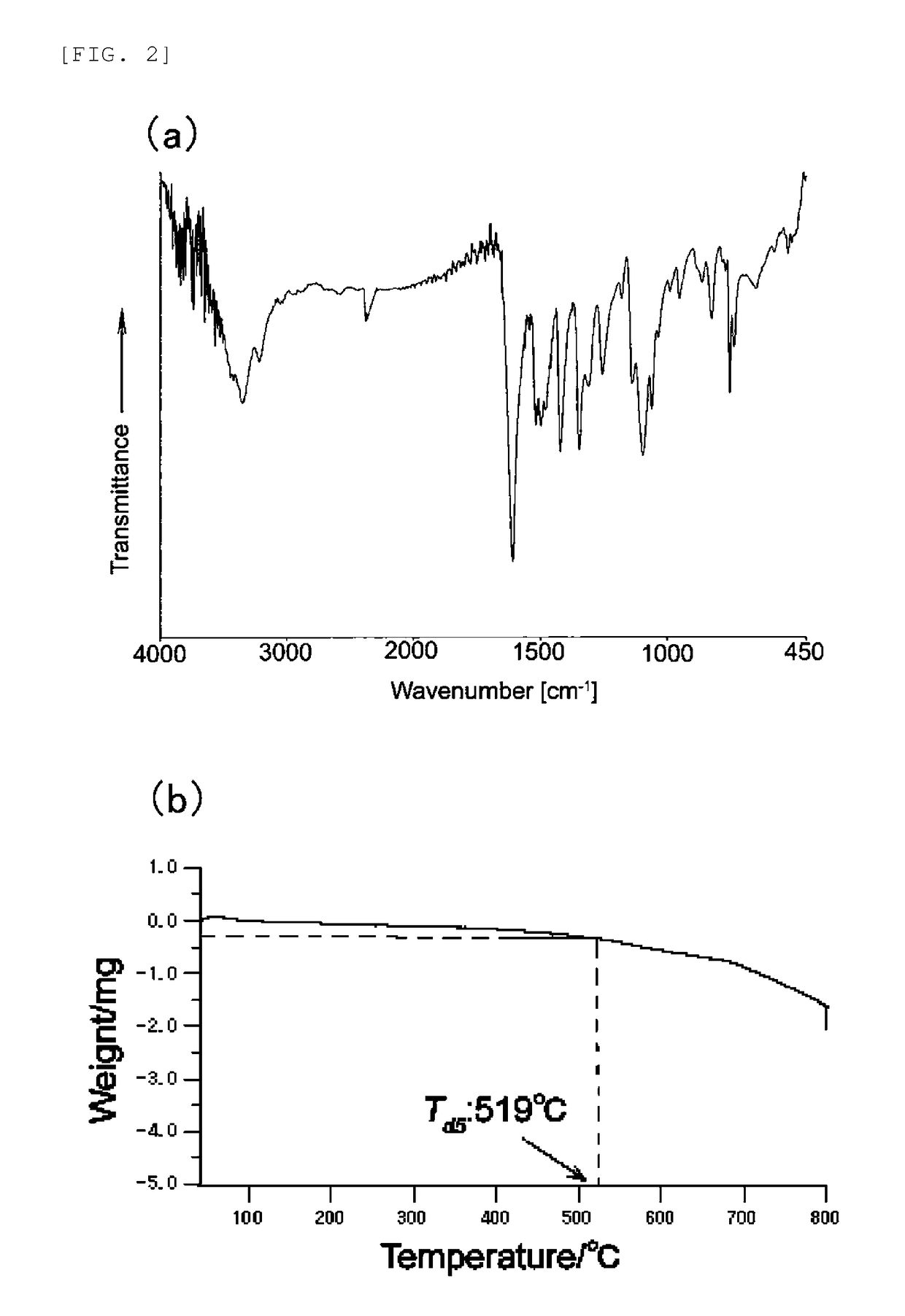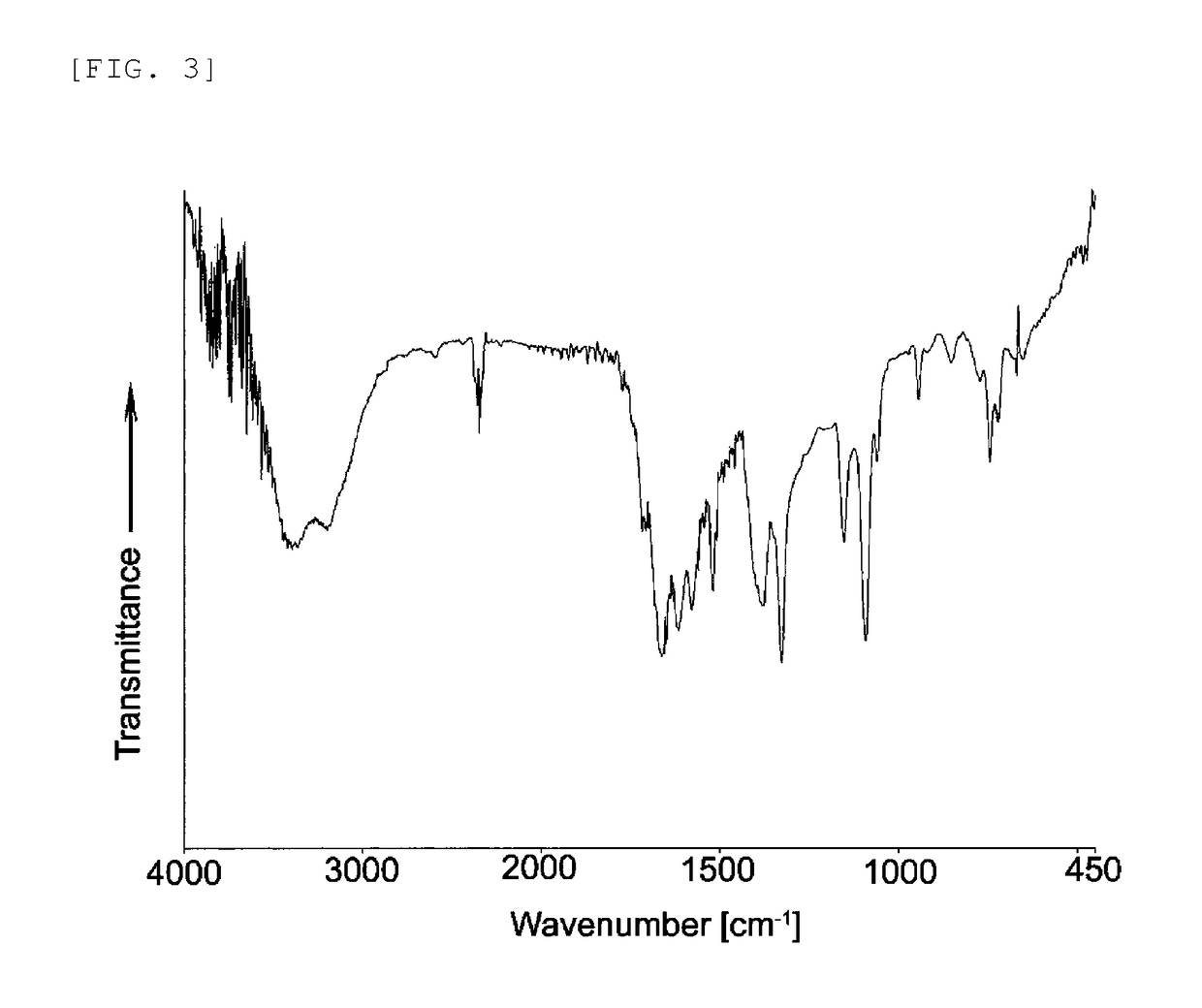Electrode catalyst and method for producing the same
a technology of electrode catalyst and electrode electrode, which is applied in the direction of organic compound/hydride/coordination complex catalyst, physical/chemical process catalyst, cell component, etc., can solve the problems of increasing the greenhouse effect, carbon dioxide generated when used, and the cost problem, and achieves the effect of high oxygen reduction activity
- Summary
- Abstract
- Description
- Claims
- Application Information
AI Technical Summary
Benefits of technology
Problems solved by technology
Method used
Image
Examples
example 1 (
1. Example 1 (Synthesis of Poly(Tetraamino Cobalt Phthalocyanine-Tetracarboxy Cobalt Phthalocyanine))
[0131](1) Synthesis of Tetranitro Cobalt Phthalocyanine (Compound of General Formula (4))
[0132]A 500-ml recovery flask was charged with 10.051 g (0.048 mol) of 4-nitrophthalic acid, 4.001 g (0.031 mol) of cobalt chloride, 30.004 g (0.500 mol) of urea, 1.041 g (0.005 mol) of ammonium molybdate and 150 ml of nitrobenzene, and the mixture was stirred at 180° C. for 8 hours. After the completion of the reaction, the mixture was washed by filtration using methanol, and boiled in 350 ml of an aqueous 1 N HCl solution (NaCl saturated). After cooling overnight, the solution was washed by filtration using pure water and methanol, and dried at 80° C. under reduced pressure. This operation was repeated twice. The resulting solid was boiled in 200 ml of pure water, and after cooling, the solid was washed by filtration using methanol, and dried at 80° C. under reduced pressure. This operation was...
example 2 (
3. Example 2 (Synthesis of Poly(Tetraamino Cobalt Phthalocyanine-Tetracarboxy Nickel Phthalocyanine))
[0154]Tetracarboxamide nickel phthalocyanine (TAmNiPc) was synthesized in the same manner as in “(3) Synthesis of tetracarboxamide cobalt phthalocyanine (compound of general formula (6))” in Example 1, except for using 4.018 g (0.031 mol) of nickel (II) chloride, in place of cobalt chloride. The resulting (TAmNiPc) was hydrolyzed in the same conditions as in “(4) Synthesis of tetracarboxy cobalt phthalocyanine (compound of general formula (2))” in Example 1 to synthesize tetracarboxy nickel phthalocyanine (TCaNiPc). The resulting (TCaNiPc) and TACoPc obtained in Example 1 were condensed in the same conditions as in Example 1 (5), to obtain poly(tetraamino cobalt phthalocyanine-tetracarboxy nickel phthalocyanine) (Poly(TACoPc-TCaNiPc)). An electrode catalyst was prepared in the same conditions as in “(6) Preparation of electrode catalyst and electrode” using the resulting Poly(TACoPc-...
example 3 (
5. Example 3 (Synthesis of Poly(Tetraamino Cobalt Phthalocyanine-Tetracarboxy Iron Phthalocyanine))
[0157]Tetracarboxamide iron phthalocyanine (TAmFePc) was synthesized in the same manner as in “(3) Synthesis of tetracarboxamide cobalt phthalocyanine (compound of general formula (6))” in Example 1, except for using 4.943 g (0.039 mol) of iron(II) chloride, in place of cobalt chloride. The resulting (TAmFePc) was hydrolyzed in the same conditions as in “(4) Synthesis of tetracarboxy cobalt phthalocyanine (compound of general formula (2))” in Example 1 to synthesize tetracarboxy iron phthalocyanine (TCaFePc). The resulting (TCaFePc) and TACoPc obtained in Example 1 were condensed in the same conditions as in Example 1 (5), to obtain poly(tetraamino cobalt phthalocyanine-tetracarboxy iron phthalocyanine) (Poly(TACoPc-TCaFePc)). An electrode catalyst was prepared in the same conditions as in “(6) Preparation of electrode catalyst and electrode” using the resulting Poly(TACoPc-TCaFePc), a...
PUM
| Property | Measurement | Unit |
|---|---|---|
| temperature | aaaaa | aaaaa |
| temperature | aaaaa | aaaaa |
| temperature | aaaaa | aaaaa |
Abstract
Description
Claims
Application Information
 Login to View More
Login to View More - R&D
- Intellectual Property
- Life Sciences
- Materials
- Tech Scout
- Unparalleled Data Quality
- Higher Quality Content
- 60% Fewer Hallucinations
Browse by: Latest US Patents, China's latest patents, Technical Efficacy Thesaurus, Application Domain, Technology Topic, Popular Technical Reports.
© 2025 PatSnap. All rights reserved.Legal|Privacy policy|Modern Slavery Act Transparency Statement|Sitemap|About US| Contact US: help@patsnap.com



